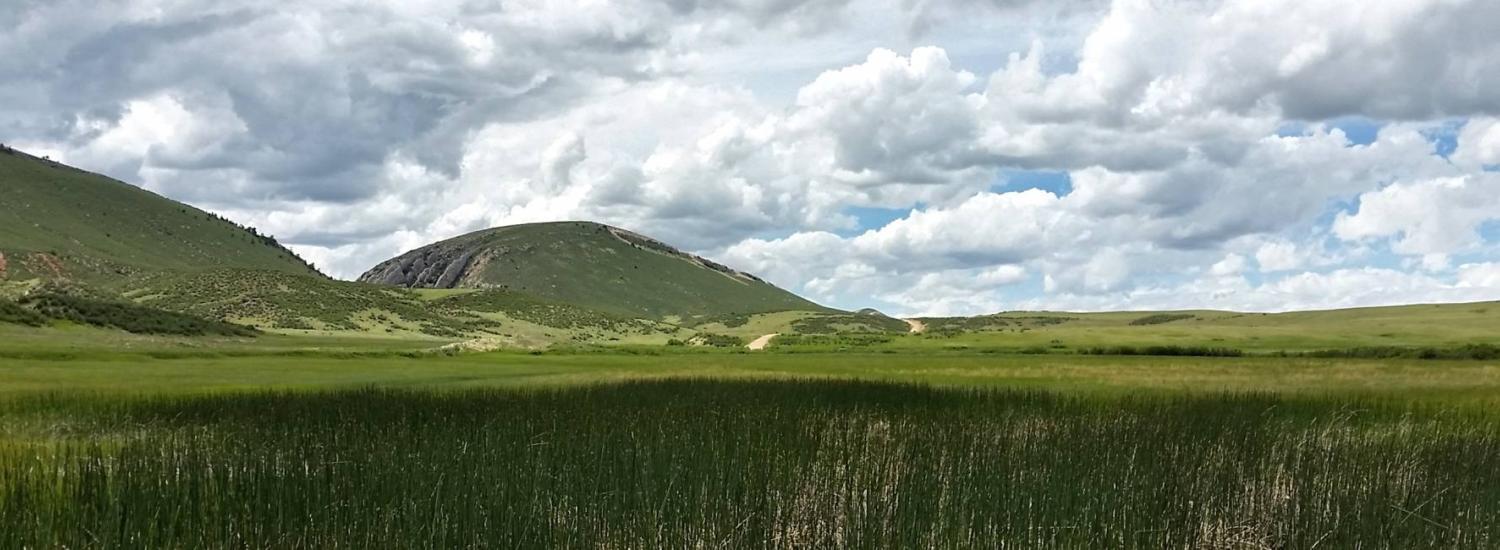Surprisingly Large Carbon Uptake by North American Biosphere During El Niños
New finding addresses a major uncertainty in climate models

New analysis of NOAA’s long-term air samples by CIRES and NOAA scientists finds that the North American terrestrial biosphere takes up unexpectedly large amounts of carbon in response to elevated carbon dioxide levels during El Niño years.
Scientists have long known that the rate of carbon dioxide, or CO2, entering the atmosphere tends to increase during El Niños, the cyclical warming of the equatorial Pacific that influences weather worldwide. This increase was thought to be primarily influenced by a rise in CO2 emitted by tropical ecosystems, while the response from regions outside the tropics was thought to be small.
Instead, analysis of 20 years of NOAA atmospheric sampling over North America showed that the biosphere soaks up the equivalent of 2.24 billion tons more carbon dioxide per year during El Niño periods than La Niña periods, or approximately one-third of the total annual CO2 emissions for the continent. The finding was published in the journal Science Advances.
This map shows the sampling sites for measurements of atmospheric CO2 in NOAA’s Global Greenhouse Gas Reference Network between 2007 and 2015. Credit: NOAA
Lead authors Lei Hu, a CIRES scientist working at NOAA, and Arlyn Andrews, chief of the Carbon Cycle program at NOAA’s Global Monitoring Laboratory, said the amount of variability was very surprising—and important for understanding climate change.
“This isn’t reflected in bottom-up ecosystem models,” Andrews said. “Atmospheric data from our monitoring network is showing us something new and important about the biosphere’s response to precipitation and temperature patterns.”
“This is a new insight into the biosphere and it offers a way for models to refine their treatment of carbon flux to help improve future predictions,” said Hu.
El Niño and La Niña, collectively known as the El Niño Southern Oscillation, are a recurring climate pattern driven by changes in the temperature of waters in the central and eastern tropical Pacific Ocean. This alternating pattern of ocean warming and cooling, referred to as the ENSO cycle, directly affects rainfall distribution and air temperature in the tropics and can have a strong influence on weather across the United States and other parts of the world.
In the tropics, El Niño tends to reduce precipitation and increase air temperatures, which often leads to drought, reduced plant growth, and increased fire activity—all of which result in higher CO2 emissions. Over North America, El Niño brings wetter conditions with increased temperatures in winter and spring and decreased temperatures in summer—conditions that spur plant growth and CO2 uptake. The cooler La Niña cycle tends to be the opposite—cooler, moister conditions in the tropics with more CO2 uptake; drier, cooler in spring and hotter in summer over North America, with reduced carbon uptake by plants.
Over the North American continent, the new study found that swings in precipitation, rather than temperature, is the primary control on annual net carbon uptake.
The importance of carbon-cycle feedbacks
According to the new work, the North American biosphere soaks up the equivalent of 2.24 billion tons more CO2 per year during El Niño periods than La Niña periods. That’s roughly 40 percent of the total fossil fuel emissions generated in North America in an average year, or 1.25 times more than the CO2 reduction goals established for the United States by the Paris climate agreement known as COP-21.
It’s a massive fluctuation from one year to another that’s largely not recognized by climate models. This study shows the value of regional observation networks for diagnosing how different ecosystems respond to global weather patterns.
The importance of understanding carbon cycling
While climate models have become increasingly sophisticated, Hu said, current models are still hampered by substantial uncertainties. A big one is how ecosystem processes, particularly carbon fluxes, respond to changing environmental conditions as a result of climate change. A better understanding of these responses, for example, to an interannual climate phenomenon such as ENSO, will likely help refine scientists’ understanding of the overall carbon-climate feedbacks, as well as climate impacts of fossil fuel emissions.
“We need to get the carbon cycle right to understand how climate impacts of fossil fuel use could change in the future,” said co-author Steve Montzka, a NOAA scientist and CIRES Fellow.
This story was written by NOAA Communications.